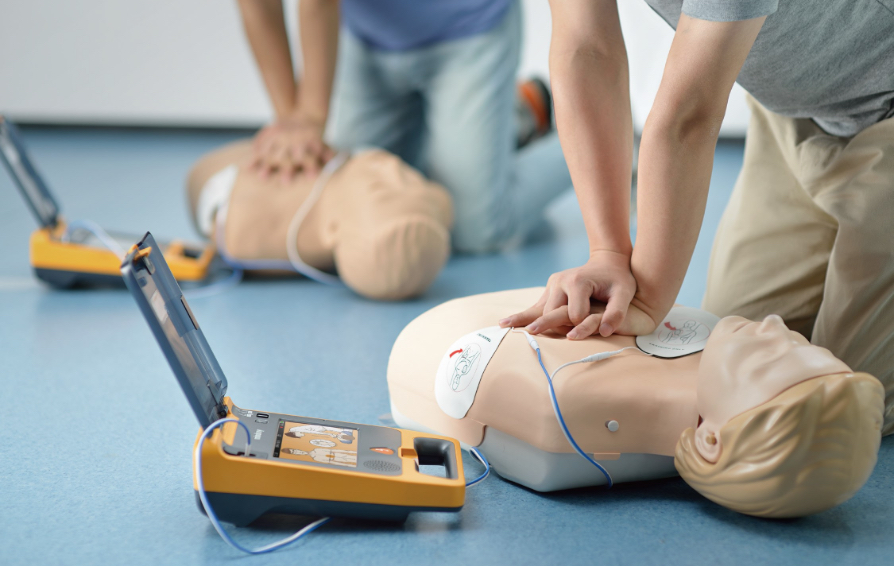AED Essentials: Key Facts and Information on Defibrillators
Automated External Defibrillators (AEDs) are crucial life-saving devices that significantly provide immediate aid during cardiac emergencies. This comprehensive guide will delve into the essential information about AEDs, highlighting their importance for individuals and businesses. Whether you are looking to enhance safety measures at home, in the workplace, or public spaces, understanding AEDs is vital.
This guide is particularly relevant for those seeking to purchase an AED defibrillator for sale, as it will provide valuable insights into their functionality and benefits.
Understanding AEDs
AEDs, short for Automated External Defibrillators, are portable devices designed to deliver an electric shock to the heart in cases of sudden cardiac arrest. These devices are equipped with sensors to analyse the heart's rhythm and provide a shock if necessary. Understanding how AEDs work in cardiac emergencies is crucial, as they can significantly increase the chances of survival when used promptly.
Quick access to AEDs in public spaces is of paramount importance. Sudden cardiac arrests can occur anywhere, and having AEDs readily available can make a life-saving difference. Individuals and businesses need to recognise the significance of AED accessibility in various settings, including schools, gyms, offices, and community centres.
Benefits of Having an AED
The presence of AEDs has been proven to improve survival rates for sudden cardiac arrest victims. When used within the first few minutes of a cardiac arrest, AEDs can significantly increase the chances of a positive outcome. The peace of mind of having an AED on-premises cannot be overstated. Knowing that a device can provide immediate assistance in a life-threatening situation reassures individuals and employees in a business environment.
Exploring options for AED defibrillator for sale is a proactive step towards bolstering safety measures and preparedness for cardiac emergencies. Businesses and individuals alike can benefit from understanding the role of AEDs in safeguarding lives and taking the necessary steps to acquire these life-saving devices.

Types and Models Available
A comprehensive overview of the different types and models of AEDs available in the market is essential for making informed decisions. Various factors, including the intended use, environment, and specific requirements, are crucial in choosing the right AED. Understanding the differences between semi-automatic and fully automatic AEDs and considering features such as voice prompts and visual instructions is key to selecting the most suitable model.
Considerations for choosing the right AED for specific needs or environments involve assessing factors such as durability, ease of use, and compatibility with existing emergency response protocols. Whether it is for a busy office building, a sports facility, or a residential community, the choice of AED should align with the unique circumstances and potential cardiac risk factors present in the environment.
Maintenance and Training
The importance of regular maintenance and checks for AED functionality cannot be overlooked. AEDs are life-saving devices that must always be kept in optimal working condition. Routine inspections, battery checks, and electrode pad replacements are essential aspects of AED maintenance to ensure their readiness for use in emergencies.
Proper training in operating an AED effectively is equally critical. Individuals and designated responders must be adequately trained to use the device confidently and proficiently. Training programs focusing on CPR and AED usage equip individuals with the knowledge and skills to respond swiftly and effectively in emergencies.
Legal Regulations and Compliance
Understanding the legal requirements for having an AED in specific facilities or establishments is imperative for compliance and liability considerations. Regulatory standards and guidelines vary by location and industry, and businesses and organisations need to be aware of the legal obligations of AED installation and maintenance.
Conclusion
In conclusion, this guide has provided a comprehensive overview of the significance of AEDs in saving lives during cardiac emergencies. From understanding the functionality of AEDs to exploring the benefits, types, maintenance, and legal regulations, the information presented emphasises the critical role of AEDs in fostering heart-safe environments. We hope individuals and businesses will consider acquiring AED defibrillator for sale to enhance preparedness and contribute to a safer and more secure environment.

Comments
Post a Comment